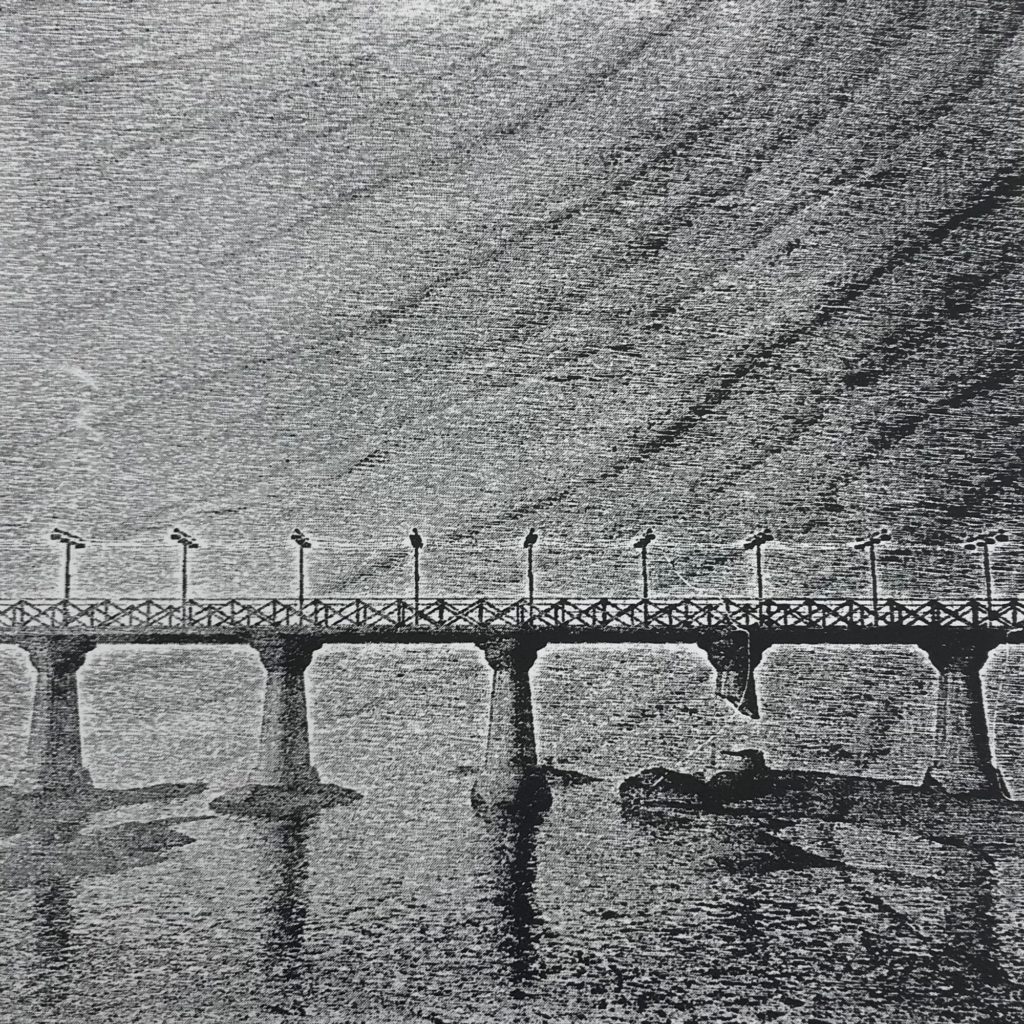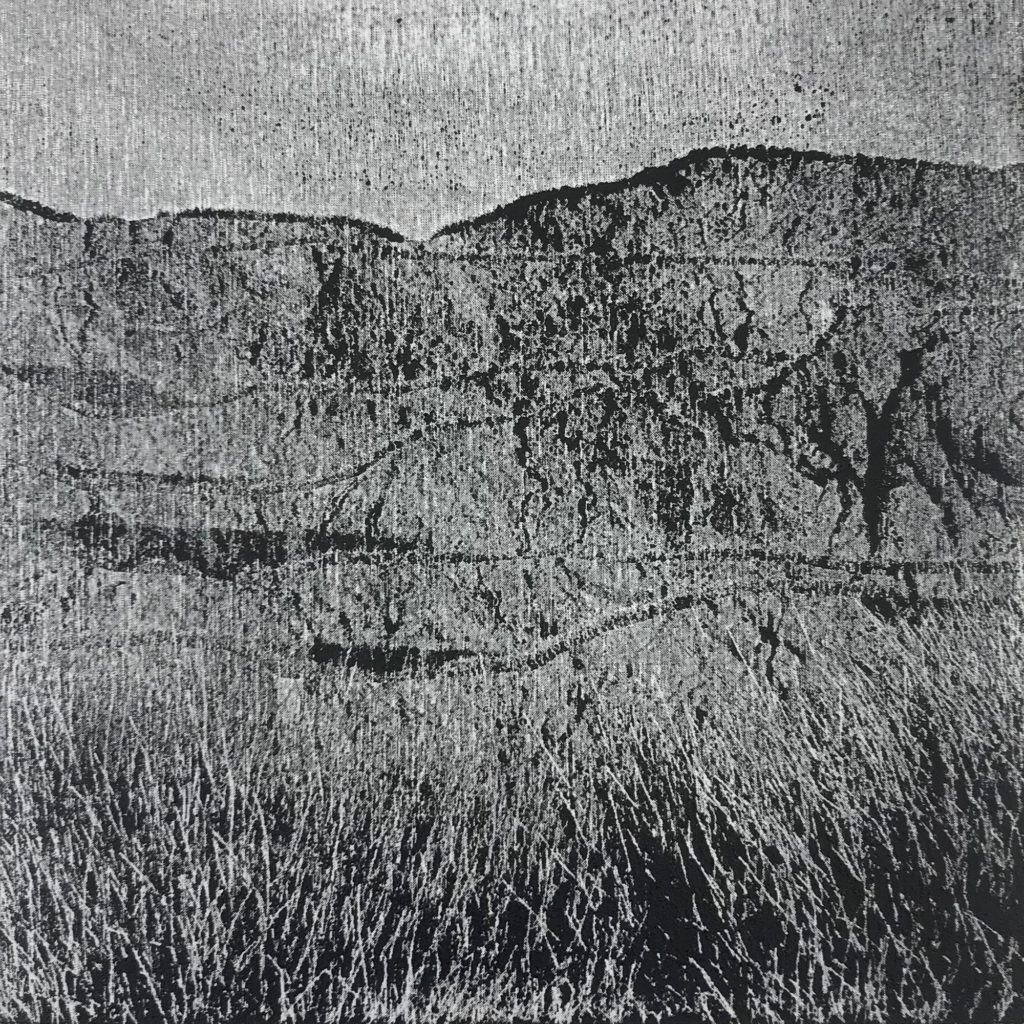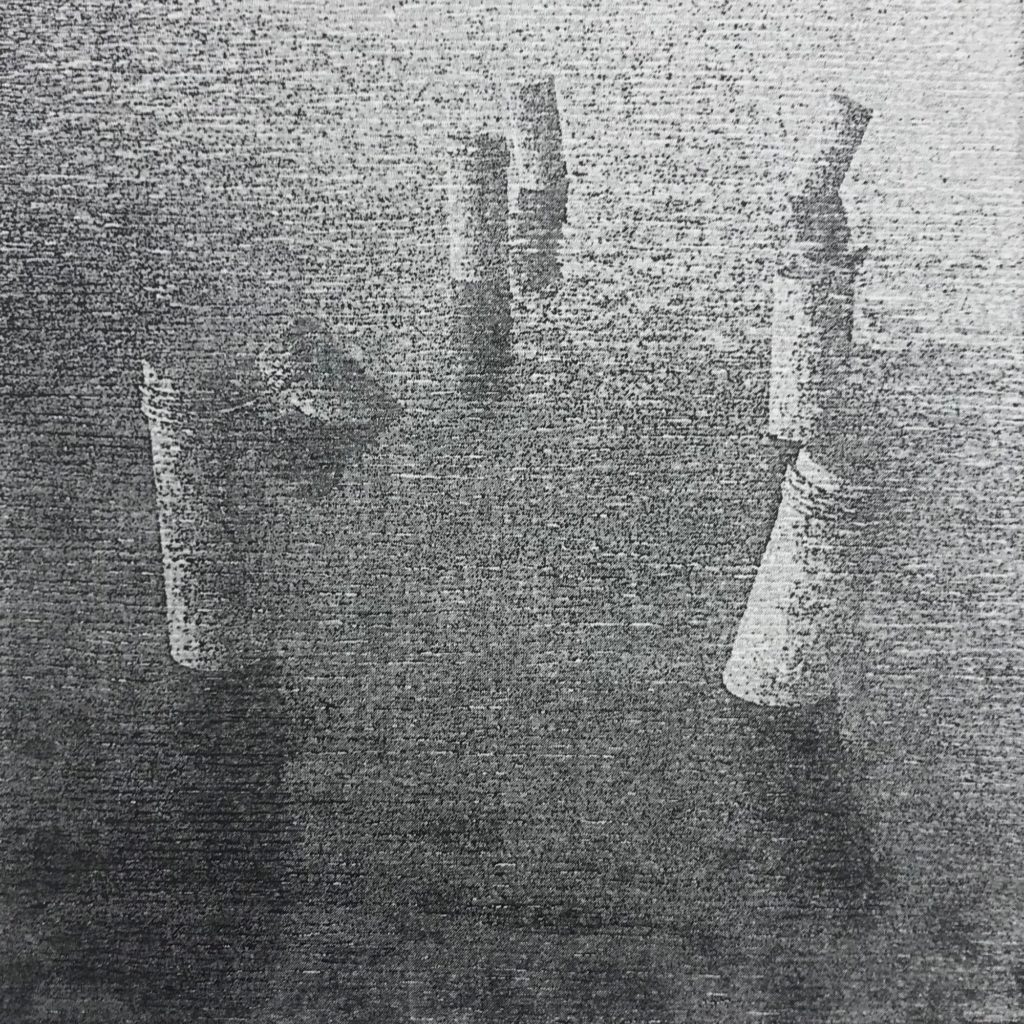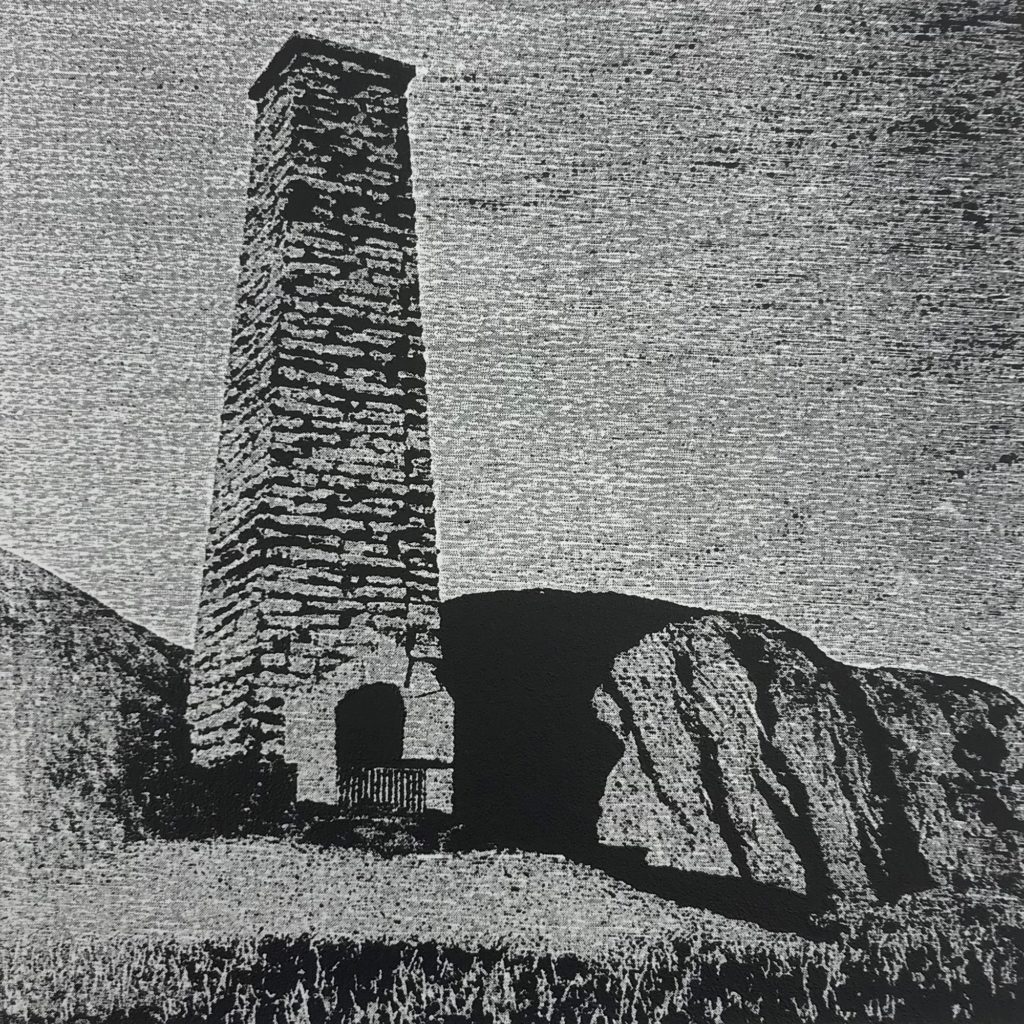Traveling out of South Cumbria requires negotiating the bay. Over hundreds of train journeys, the attributes of this landscape are imprinted on my mind, yet always just slightly off-kilter or mis-remembered. These are recreated with five digitally etched prints.
Here is the Place I Never Walked
Traveling out of South Cumbria requires negotiating the bay. Over hundreds of train journeys the attributes of this landscape are imprinted on my mind, yet always just slightly off-kilter or mis-remembered. They appear as a set of vague motifs spread over the miles and miles of coastline. They are the visual backdrop, the stage, across which the chance of reflection plays out – how often do we get to sit for an hour and allow our minds to wander? Translating through mediums, from contemporary digital technologies to traditional printing, each panel shows an imagined and surreal aspect of this landscape.

1
Often, on the journey, you find yourself in moments where the sea lies, churning and turbulent, or glassy and clouded, far out either side of the train windows. You hear the drone of the tracks augment slightly as the wheels make contact with the bridge, the sound is slightly more hollow, more precarious. You only see these vast structures once the train has carried you further round the bay; they sit indistinct on the horizon line. You imagine what they are like to stand under, walk across, what they are like in the future and the past.
2
Grasslands are not flat, are not monotonous. The journey compacts great swathes of this surface into an unreal panorama, and as this intricate patchwork of coarse grass, dark sand, isolated pools and scrubland folds in on itself you imagine your body slipping freely through, bare feet soaked with mud and salt water.


3
It appears for the briefest second; if you don’t know to look for it then it’s already gone. Silence is not universal, a single measure or a specific quietness; quarries hold a silence you have not heard elsewhere. They are so tied to activity and intervention that when all that has faded, and they lie dormant, the stone edifices never cease to reverberate with the harsh gestures of cleaving and splitting that made them.
4
Each year the coastline slips back further, splintering and fragmenting, sediment drifting out into the oncoming tides, deposited in some unseen place. In its wake it leaves behind markers of what was; a last remaining clump of grass, a concrete pillbox, and a jetty, the remnants uneven, as though tossed down from a great height and allowed to linger where they struck. You want to walk out to it, to imagine alighting from an unsteady boat onto its sure surface, to dangle silvery wire (like spider webs) into the dark water from its side.


5
The kiln certainly doesn’t exist, or it exists in multiples scattered along the coastline. You have seen an archway, almost imperceivable from the cliff faces around it. You have seen a chimney, maybe twice, but certainly far away, starkly jutting out above the still pools of the nature reserve, above the long, shimmering grass that borders it. They are one and the same, fragments of industry and labour. You imagine forming clay with your bare hands. You imagine breaking it first from the bank of a rivulet near the bay, digging your nails into the cold earth. You feel all the imperfections it brings with it; harder pieces of stone, sharp edges of splintered shells, mud and iron running through it like veins in marble. You work the mass in your hands with care, you purposefully mould into being a form you had not planned for, had not set out to create. You imagine placing it, pitifully small in comparison, on the alter of the kiln, a strange form of material devotion. You imagine the ritual happening again and again.